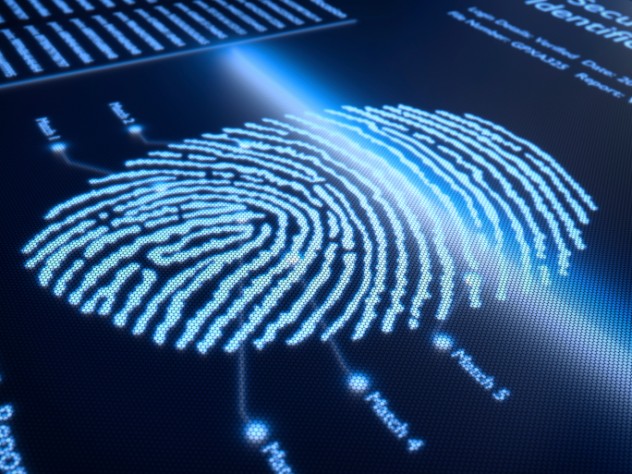 Crime
Crime  Crime
Crime  Technology
Technology 10 Hilariously Over-Engineered Solutions to Simple Problems
 Miscellaneous
Miscellaneous 10 Ironic News Stories Straight out of an Alanis Morissette Song
 Politics
Politics 10 Lesser-Known Far-Right Groups of the 21st Century
 History
History Ten Revealing Facts about Daily Domestic Life in the Old West
 Weird Stuff
Weird Stuff 10 Everyday Products Surprisingly Made by Inmates
 Movies and TV
Movies and TV 10 Actors Dragged out of Retirement for One Key Role
 Creepy
Creepy 10 Lesser-Known Shapeshifter Legends from Around the World
 Animals
Animals 10 Amazing Animal Tales from the Ancient World
 Gaming
Gaming 10 Game Characters Everyone Hated Playing
 Crime
Crime 10 Terrifying Serial Killers from Centuries Ago
 Technology
Technology 10 Hilariously Over-Engineered Solutions to Simple Problems
 Miscellaneous
Miscellaneous 10 Ironic News Stories Straight out of an Alanis Morissette Song
Who's Behind Listverse?

Jamie Frater
Head Editor
Jamie founded Listverse due to an insatiable desire to share fascinating, obscure, and bizarre facts. He has been a guest speaker on numerous national radio and television stations and is a five time published author.
More About Us Politics
Politics 10 Lesser-Known Far-Right Groups of the 21st Century
 History
History Ten Revealing Facts about Daily Domestic Life in the Old West
 Weird Stuff
Weird Stuff 10 Everyday Products Surprisingly Made by Inmates
 Movies and TV
Movies and TV 10 Actors Dragged out of Retirement for One Key Role
 Creepy
Creepy 10 Lesser-Known Shapeshifter Legends from Around the World
 Animals
Animals 10 Amazing Animal Tales from the Ancient World
 Gaming
Gaming 10 Game Characters Everyone Hated Playing
10 Fascinating Facts About Argentina
Buenos Aires, the capital of Argentina, is the fourth biggest city on earth, but the rest of the world has surprisingly little knowledge of this vast and populated land. There is definitely more than meets the eye when it comes to Argentina. This list introduces you to Argentina by presenting 10 facts most outsiders don’t know.
10 The Tango

The tango is a sultry and intimate dance for two people. Its moves and music are seductive and passionate. Easily recognized by the close embrace between dance partners and its quick decisive movements, Argentina lays claim to inventing the world-famous dance. Tango took its first steps by the Rio de la Plata, the river that separates Argentina from Uruguay. It spread to the working-class port communities of the city until it caught on in dance halls. It was the first couple dance that called for improvisation. In 1912, Paris fell in love with the dance, marking the beginning of its rise to international fame.
While the tango is now one of the most popular dances in the world, it started out as a risqué improvisation in the brothels of Buenos Aires. Before the tango craze spread through Europe in the early 20th century, it may have been a dance reserved for prostitutes who shook their tail feathers with clients. This theory of the history of the tango doesn’t take into account the other places where working-class men and women went to dance in the working-class neighborhoods of Buenos Aires. Regardless, what is known is that the tango is a dance whose early days were all about sex and gender relations. The women and men who danced were playing out social roles through their movements. It isn’t called the “dance of love” for nothing.
9 Friend’s Day

Most countries celebrate the ubiquitous Mother’s Day, which falls on different days in different countries. Paraguay celebrates Día de la Madre on May 15th, while Argentina celebrates in October. We can also find Father’s Day around the world, although it’s not celebrated as feverishly as its counterpart.
What you won’t find everywhere is Friend’s Day, a day dedicated entirely to friendships. In the early 1970s, an Argentinian scholar founded Dia del Amigo after he felt connected to everyone on Earth when Apollo 11 landed on the moon. Friend’s Day is an official holiday in Buenos Aires, although it is not a national public holiday. Friends gather, parties are held, and everyone gets together late at night to celebrate friendship on July 20th of every year. On Friend’s Day in 2005, a record number of people were celebrating their friendships. There were so many people calling their amigos that cellular networks went down in multiple cities and so many were in the festive mood that hotels and restaurants had no space to hold them all.
8 Dinosaurs

In the last decade, Argentina has been home to multiple discoveries of gigantic dinosaurs. Giganotosaurus is a dinosaur genus found in Argentina. As the name confers, members of this genus are some of the biggest land carnivores to roam the earth. Roaming the earth on two legs and similar in look to the famed T. rex, Giganotosaurus was taller than its similar-looking cousin and had three “fingers” instead of two. It lived some 90–112 million years ago and may have fed on another large dinosaur called the Argentinosaurus.
Argentinosaurus was one of the biggest known dinosaurs. It was an herbivore named after the country in which it was found and is believed to have been as large as 38 meters (125 ft) in length and weighed over 75,000 kilograms (160,000 lbs). Recently, scientists studied how such a large animal was able to walk on land. They scanned the skeleton and digitally reconstructed its movements to study its locomotion. Turns out these gigantic dinosaurs were able to reach speeds of more than 2 meters per second (5 mph).
Not only was Argentina a playground for huge dinosaurs, the oldest predator dinosaur found to date was also discovered here in 1993. This oldest carnivore stood on two legs with small arms and big legs. Called the Eoraptor, it was a little dog-sized guy measuring only 1 meter (3.2 ft) in length. Eoraptor was likely carnivorous, munching on animals 230 million years ago in the northwest of what is now Argentina.
7 Fingerprinting

On June 19, 1892, Francisca Rojas’s two children were found stabbed to death in their rural home in the Province of Buenos Aires. The 27-year-old claimed that her neighbor broke in and committed the terrible double homicide. The neighbor was cleared after over a week of torture and a city detective was brought in to help with the investigation. Inspector Alvarez looked over the scene of the crime and noticed a bloody fingerprint on the door, which he removed the and brought it in for examination. He had Rojas’s fingerprints taken and compared them with the print on the door. After determining they were a match, she immediately confessed to the horrific crime.
Rojas became the first person in the world to be found guilty through fingerprint evidence. Prior to her conviction, an anthropologist who immigrated to Argentina named Juan Vecutich had begun work on the first filing system for fingerprints. He was a pioneer in fingerprinting evidence and his filing system was the first in the world of its kind. After Rojas’s guilty verdict, Argentina became the first country to use fingerprinting as the primary form of identification in criminal records.
6 Southernmost Inhabited City

Depending on whether you believe the Chileans or Argentines, Argentina just may be home to the southernmost city in the world. Chile’s naval base settlement, Puerto Williams, markets its tourism efforts on the slogan and the two towns are fierce rivals over who is actually the most southern city. While the official title is up for debate, Ushuaia lays claim to this tourist-drawing tagline.
Ushuaia is the capital of the Tierra del Fuego province in southern Argentina. Home to around 57,000 people and covering 23 square kilometers (9 sq mi), the area has been settled for the past 7,000 years. Temperatures range throughout the year from -1 degrees Celsius (30 °F) to average highs of 15 degrees Celsius (59 °F). Tourists flock here to see arctic wildlife such as penguins, seals, and killer whales. Visitors can take a ride on the End of the World Train to the Tierra del Fuego National Park, where many of these animals live.
5 Animated Film
Walt Disney is usually associated with early animated films, but Disney is said to have been inspired by the Argentine filmmaker Quirino Cristiani. An Argentine born in Italy, Cristiani was a young and enthusiastic animator who pioneered the animation technique of cardboard cutouts. Cutout animation is a faster and easier way to create animation by using cutouts of figures rather than individual drawings for each frame.
Collaborating with producer Frederico Valle, the two of them ambitiously took on the task of creating the very first feature-length animated film. Called El Apóstol, the film was a political satire and premiered to rave reviews on November 9, 1917. Just nine years later, all known copies of the first feature-length animated film were destroyed when Valle’s film studio burnt to the ground in 1926. However, Cristaini continued to pioneer work in animation. In 1931, he created the very first animated film with sound. Peludópolis was another political satire made with Cristiani’s trademark cardboard cutout technique.
4 Che Guevara

Ernesto “Che” Guevara’s face has been adopted as iconography in popular culture for all kinds of counterculture and revolutionary movements and ideologies. His image is printed on t-shirts, splashed on murals, and hung on posters in the dorm rooms of inspired college students. The photograph most of these prints are based on was taken by Alberto Korda and named the most famous photograph in the world by Maryland Institute College of Art. It’s become such a popular image that, decades after his death, many young people walk around sporting his shirts just in the name of being trendy. He represents rebellion and individuality, his iconography becoming a romanticized vision of revolution.
Guevara was a revolutionary for Marxism and is widely recognized as a central player in the Cuban Revolution. After medical school, he traveled throughout Latin America, and the poverty he saw inspired him to become a scholar of Marxism. The movie The Motorcycle Diaries was made about Guevara’s Latin American excursion, where he traveled with a friend who was also a medical student. In their travels, they saw extreme poverty and structural inequalities amongst the people.
Although his legacy is tied to his part in the Cuban Revolution, Guevara did not hail from Cuba. He was born in Rosario, Argentina, south of Buenos Aires. He grew up in Argentina and it was after he became a trained medical doctor that he began his revolutionary activities. Guevara died in Bolivia, executed by the Bolivian military in 1967.
3 Same-Sex Marriage

Canada became the first country in the Americas to legalize same-sex marriage in 1999 and Argentina followed suit nearly a decade later. The social progress in this strongly Catholic country have been attributed to changing ideas about freedom and identity in a post-dictatorship government.
Beginning with regional legalization of civil unions in 2002, Argentina quickly made strides towards legalizing same-sex marriage. In 2008, same-sex couples who had lived together for five years or more were granted the right to collect death benefits if their partner passed away. A mere two years later, the country legalized same-sex marriages nationwide. It was a dramatic statement for a country that is still extremely divided on the issue. Argentina is the birthplace of the first child in the world to be legally recognized as having two fathers. Born to a couple in Buenos Aires in July 2012, this child is the first ever to have two dads listed on his birth certificate.
2 Cosmetic Surgery

At least 1 in 30 Argentines undergo cosmetic surgery, and due to the low costs of the procedures, it’s become a hub for cosmetic surgery tourism. A less-than-awesome phenomena is occurring in Argentina called the “fashion model syndrome” due to the high number of women who are striving for an idealized body at any cost. Anorexia rates have soared in recent years and the country has the highest per capita rate of anorexia in the world. This sad trend isn’t reserved for females—one-eighth of patients being treated for eating disorders are men.
Buenos Aires has a huge population of cosmetic surgeons, due to the local demand as well as the medical tourists who come from all over the world. Buenos Aires boasts some of the best plastic surgeons in the world, but due to the large number of procedures and the large number of surgeons, complications can occur in any number of surgeries.
People are privately and publicly obsessed with their looks. In 2009, the former Miss Argentina went under the knife for a procedure called a gluteoplasty, which is a butt augmentation meant to lift and firm the derriere. She suffered severe complications during the procedure and died from a pulmonary embolism just three days post-surgery. Maybe this is part of the reason for the growing number of psychiatrists in Buenos Aires. There are so many in fact that an area of the city has been dubbed “Villa Freud” due to its high number of psychoanalysts.
1 Natural Wonders

Argentina’s diverse landscape and large land area set the stage for the extreme temperatures and even more extreme landscapes. It’s home to some of the most spectacular waterfalls on the planet and sets records in extremes for huge rivers and wildlife diversity. The Iguazú Falls are comprised of over 275 cascades in the north of the country, on the border between Brazil and Argentina. The water tumbles over heights of 80 meters (262 ft) and 3 kilometers (1.9 mi) wide. Many consider them the most amazing waterfalls in the world. The falls are surrounded by a subtropical rainforest and countless species of rare animals, including the endangered Vinaceous-breasted Amazon, a wild green parrot.
Moving south to Patagonia brings us up against another extreme in landscape, the glaciers of Patagonia. One such glacier is the Perito Moreno Glacier, which is the third-largest reserve of fresh water in the world and one of only three glaciers in Patagonia that are growing and not shrinking. Most people don’t associate Argentina with glaciers, but this one is one of the most accessible glaciers in the world and tourists flock here to see the power of ice up close and personal.
The hottest and coldest temperatures in South America have been recorded in Argentina. On June 6, 1907, a small town in the heart of Patagonia called Sarmiento recorded a temperature of -32.8 degrees Celsius (-27 °F). Thirteen years later, Villa de Maria in the Cordova province experienced the highest recorded temperature in South America on January 2, 1920. The thermometer reached a sweltering 49.1 degrees Celsius (120.4 °F).
It also has the highest and lowest elevations. Santa Cruz is a southern province of Argentina and is part of the expansive Patagonia region of South America. Laguna del Carbón is a salt lake located in Santa Cruz, and at 105 meters (344 ft) below sea level, it is the lowest point in South America. Further north in the Andes is the highest point in South America, the Aconcagua. Located in the Mendoza province, it is the tallest mountain in both North and South America, measuring upwards of 6,962 meters (22,841.2 ft). It is considered a non-technical climb, and because of its height, many mountaineers consider it the highest non-technical climb on Earth.
This country is less than one-third the size of the United States and holds such extremes all within the confines of its borders. This is truly a places with a wild and diverse landscape.
Kristance is a travel writer, editor, and researcher. She’s addicted to globe-trotting and has done everything from teaching English to Tibetan Buddhist Nuns in the Himalayas to earning her graduate degree in England. An avid culture geek, she’s a trained anthropologist and archaeologist. Originally from no-town USA, she’s a serial expat currently in Argentina with a serious love for chocolate and boozy cocktails. Connect with her on Twitter and read about her adventures at diggingtoroam.com








